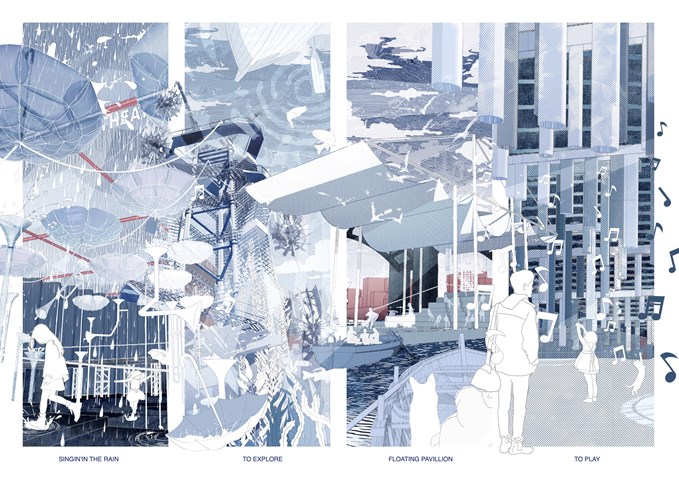Bridge Gallery
A Journey of Regeneration and Reconnection in Glasgow
Research | Glasgow City Centre
- Glasgow Waterfront
Lack of vitality has always been a problem in Glasgow’s waterfront spaces. The design of these spaces makes it difficult for people to interact with the river. The riverbank creates obstacles between the city and the river with a very inhumane design. The depression by the river formed a contrast with the city centre.
- The Clyde: from History to Future- Glasgow
The history of Glasgow and that of its river, the Clyde, are tied together. It is often said, "Glasgow made the Clyde, and the Clyde made Glasgow". As engineers made the river more navigable, the city's commerce and industries flourished. The River Clyde has been a centre for shipbuilding for hundreds of years, with boats being built in the area possibly as early as the 15th century.
In the face of historic environmental issues, the Clydeside residents around the river have always tried to work towards keeping it healthy. However, the amount and type of sedimentary pollution contained in Clyde is closely related to the industrial history of the region. The land is contaminated from the past industry in Glasgow as rainwater is sometimes infiltrates toxic chemicals such as chromium from the soil into the river.
- A City of Diversity
Glasgow is a city with a huge number of diverse communities and beliefs and a place that has a long history of welcoming and accepting emigrants from all over the world. Glasgow has the most ethnically diverse population in Scotland. This brings vitality and many subcultures to Glasgow. However, there is also a lack of communication between different ethnic and religious communities. According to the distribution map of religions and ethnic groups, it can be noticed that different groups have their own preferences in the choice of the community.
- Disused Rail Line in Glasgow
In the city centre, there is an abandoned viaduct that crosses River Clyde in Glasgow. The busy railway built in the industrial era has now become an overgrown structure in the city that brings negative impacts. Its huge volume brings isolation and depression, and cannot be integrated into the lives of citizens. The existing structure is part of the disused viaduct bridge and across the city from south to north.
Design Statement
In this proposal, gallery, as a possible medium of different social and cultural exchanges, created a connection between communities in Glasgow.
The project is located on an abandoned viaduct that crosses River Clyde in Glasgow. The busy railway bridge in the industrial era has now become an overgrown structure in the city that brings negative impacts. Its huge volume brings isolation and depression, and cannot be integrated into the lives of citizens.
Residents on the north and south banks of the river show different lifestyles and are lack of communication, make Glasgow a separated city. The viaduct seems a chance to re-establish the relation between the north and south bank and bring people back to the post-industrial area.
This project preserves and protects the rich local heritage of Glasgow through deeper community participation. It attracts people to come back to this post-industrial space. In addition to showing the history of Glasgow,no specific function is defined here, but it has great potentiality for everyone. It reuses and turns an urban wasted, negative space into a place that welcomes every artist to presents himself and invites any kind of visitor to enjoy and interact. Art blurs the boundaries of communities, two banks of the River Clyde, the past and present of Glasgow.









